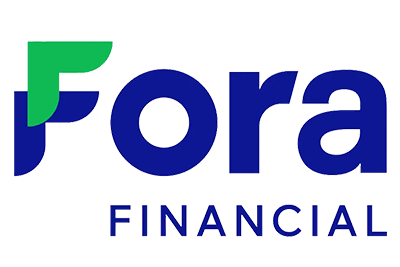Refinancing an SBA loan can be a smart move for business owners who want to lower monthly payments, improve loan terms, or create more financial flexibility. Whether you have a 7(a) or 504 loan, understanding your options can help you make the right decision. This guide walks you through when refinancing makes sense, how it works, and what to consider before moving forward.
Can You Refinance an SBA Loan?
Yes, you can refinance an SBA loan, but your options will depend on the type of loan you have and your financial situation. Both SBA 7(a) and SBA 504 loans may be eligible, though the process and requirements are different for each.
To qualify, your business typically needs to be in good standing, current on all loan payments, and able to show that refinancing will result in a clear benefit. That benefit might be a lower interest rate, a longer repayment period, or a reduction in your monthly payment burden.
Why Refinance Your SBA Loan
Now that we’ve answered the question, “Can you refinance an SBA loan,” let’s talk about reasons why you might want to. Business owners choose to refinance their SBA loans for several reasons. The most common is to lower monthly payments by securing a better interest rate or extending the repayment timeline. Others refinance to consolidate multiple debts or take advantage of improved credit since the original loan was issued.
Refinancing can also help free up cash for growth, smooth out seasonal revenue changes, or give your business more breathing room when facing financial pressure. The right refinancing strategy can support both short and long-term business goals.
How To Refinance an SBA Loan Step by Step
The SBA loan refinance process may feel complex, but it’s fairly straightforward once you know what to expect. Here’s how it typically works from start to finish.
-
Review your current loan
Start by checking the terms of your existing SBA loan. Make sure it allows refinancing and review your balance, interest rate, and any prepayment penalties.
-
Evaluate your financial position
Lenders will want to see strong financials, so prepare updated tax returns, profit and loss statements, and cash flow records. Your business credit and personal credit will both play a role in approval.
-
Compare refinancing options
Some lenders may offer to refinance an SBA loan into a conventional loan, while others may help you refinance into a new SBA loan. Consider interest rates, loan terms, and closing costs before moving forward.
-
Apply with your chosen lender
Once you select a lender, you will need to submit an application along with documentation about your business, financials, and existing loan. Some lenders may also request a business plan or a projection of how the refinance will benefit your company.
-
Complete underwriting and close
If approved, the lender will issue closing documents and pay off your original SBA loan. From there, you will begin repayment under your new loan terms.
Refinancing is not guaranteed, so it is important to work with a lender who understands SBA loan structures and can guide you through the process.
Is It Possible to Refinance an SBA Loan With Another SBA Loan or a Conventional Loan
So, can you refinance an SBA loan with another SBA loan? Yes, you can. Whether you want to refinance an SBA loan to a conventional loan or a different type of loan, it is possible to do so, but the right option depends on your financial goals and the terms of your loan.
Refinancing with another SBA loan
This may be allowed if the new loan offers a clear financial benefit, such as a lower rate or longer term. Not all SBA loans qualify, and the new loan must meet current program rules.
Refinancing with a conventional loan
Some businesses opt to refinance into a conventional loan for greater flexibility and fewer restrictions. This can be a good fit for companies with strong credit that want faster processing or different loan structures.
If you are looking for flexible funding beyond SBA options, some private lenders offer small business loans or revenue-based financing that can help you refinance or restructure debt without the paperwork and delays that often come with government-backed loans.
Pros and Cons of SBA Loan Refinancing
If you want to refinance an SBA loan, it can be a smart financial move, but it’s important to weigh the potential benefits against the risks.
Pros
-
Lower interest rates may reduce monthly payments
-
Longer repayment terms can improve cash flow
-
Opportunity to consolidate debt into one manageable loan
-
Potential access to new lenders with better terms
Cons
-
Closing costs and fees may offset savings
-
Not all SBA loans qualify for refinancing
-
The application process can take time and require extensive documentation
-
Prepayment penalties on your current loan may apply
Before moving forward, review your current loan terms and compare offers to make sure refinancing will result in real financial improvement.
Is Refinancing Right for Your Business
SBA loan refinancing isn’t always the right move for every business. It may be a smart choice if you are looking to lower your interest rate, improve monthly cash flow, or restructure your debt to better fit your current financial situation.
However, if your business has inconsistent revenue, poor credit, or limited documentation, the refinancing process may be more difficult or less beneficial. It is also important to consider any costs associated with the new loan, such as fees or prepayment penalties.
Before deciding, take a close look at your goals and financials. Comparing offers from both SBA and conventional lenders can help you determine whether refinancing supports your short-term needs and long-term success.



